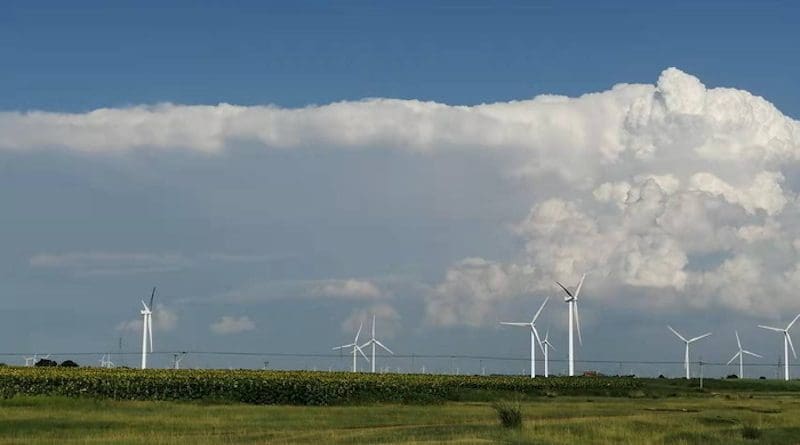Large Wind Farms Cause Different Effects For Local And Regional Climates
Zhangjiakou, a large city in Hebei Province, China, lies just northwest of Beijing. The nearby Shangyi Wind Farm in Zhangjiakou is a critical component of northern China’s electric infrastructure. While wind energy is considered clean, the impact of the Shangyi Wind Farm on both the local and regional climate remains controversial.
To find potential wind farm related climate effects within the area, a research team from the Chinese Academy of Meteorological Sciences investigated weather conditions surrounding the Shangyi Wind Farm. They based their research on long-term Zhangjiakou meteorological data ranging from 1981 to 2018 including air temperature, wind speed, relative humidity, and precipitation. In this study, scientists used the anomaly, or ratio method, to decipher differences between the weather stations that were either impacted or not impacted by wind farm operations. Advances in Atmospheric Sciences just published the full study.
“We also explored the influence of the Shangyi Wind Farm on land surface temperature and evapotranspiration using MODIS satellite data from 2003 to 2018.” said Yonghong Liu, the lead author of the study. “We compared the observation results with the latest North China Regional Climate Change Report (2020).”
Results showed that, especially during summer and autumn, the wind farm had an atmospheric warming effect at night (up to 0.95°C). The team observed minimal change in daytime air temperature, and whether a positive or negative anomaly existed depended on the season. Additionally, the annual mean temperature and the annual minimum temperature increased by 0.37°C and 0.81°C respectively. The annual mean wind speed decreased by 6%, mainly during spring (14%) and winter (8%). The wind farm did not appear to affect precipitation and relative humidity.
The study showed no significant increase in local surface temperature within the Shangyi Wind Farm. Scientists working on the project say that unrelated increased vegetation coverage inside the farm canceled out the wind farm-induced land surface warming. In addition, the results also showed that the local warming and wind speed reduction caused by the Shangyi Wind Farm were smaller than the regional climate change values. Therefore, the team concluded that wind farms have a significant effect on local climatology, but a minimal impact on regional climate.

